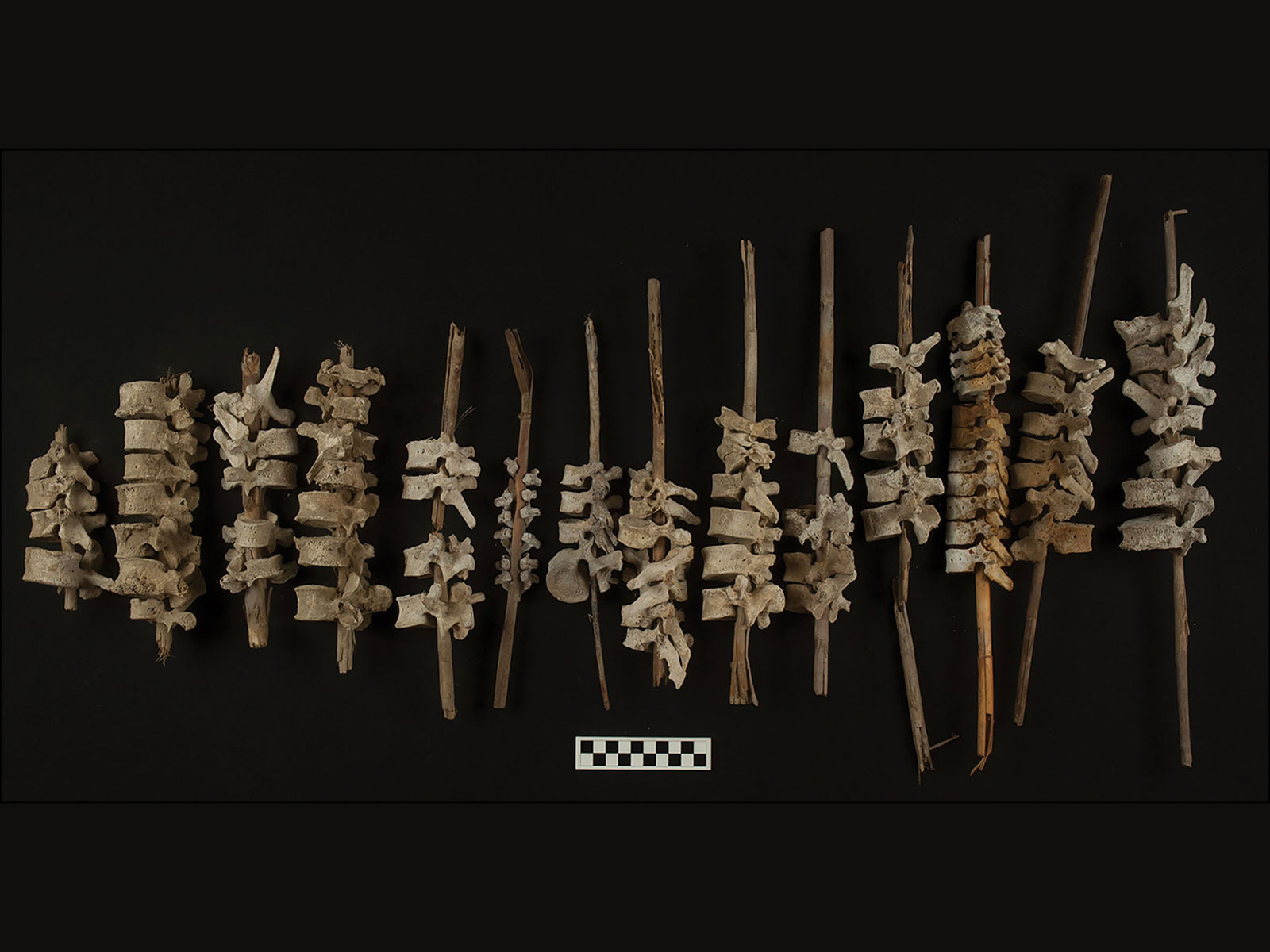Why Did 16th-Century Andean Villagers String Together the Bones of Their Ancestors?
Researchers suggest the practice was a response to Spanish conquistadors’ desecration of the remains
Megan Gannon
Archaeology Correspondent
February 1, 2022

Roughly 500 years ago, vertebrae were arranged on sticks in Peruvian tombs. C. Oshea / Antiquity Publications Ltd., Bongers et al.
Nearly 200 sticks strung up with human vertebrae have been discovered by archeologists exploring tombs in Peru's Chincha Valley. Dating back to the turbulent period of early colonization about 500 years ago, these reconstructed spines may represent attempts by Indigenous groups to salvage and put back together the remains of their ancestors. The archaeologists, who published their findings in Antiquity today, argue that this practice may have been a response to tomb destruction by Europeans who mounted campaigns to stamp out Andean religious practices in the 16th century.
Thanks to river water that flows from the Andes, the Chincha Valley is a fertile oasis in an otherwise arid environment near the Pacific coast, about 130 miles south of Lima. The Chincha Kingdom flourished in the area from around 1000 to 1400 C.E., and it included a wealthy, organized society with merchants, seafarers, farmers and a well-regarded oracle. In the 15th century, they were subsumed into the Inca Empire, but notably, they maintained some autonomy. The Inca palace at Huaca La Centinela, the major Chincha site in the lower part of the valley, is uncharacteristically small, overshadowed by a much larger Chincha complex. Written sources indicate that a Chincha leader even sat beside Inca emperor Atahualpa when they first encountered the Spanish.
“It seems to be one of the few documented cases of an alliance that was forged between the Inca and a complex polity,” says the lead author of the new study, Jacob Bongers, a senior research associate at Sainsbury Research Unit at the University of East Anglia in Norwich, England.
Bongers was not yet in graduate school when he traveled to the area in 2012 with a field expedition led by archaeologist Charles Stanish of UCLA. One day the group surveyed the less-studied part of the middle valley. There, they found the ruins of hundreds of stone burial chambers known as chullpas which had not been systematically investigated before. Inside some of these tombs, they discovered several reed posts curiously threaded with human vertebrae.
More:
https://www.smithsonianmag.com/science-nature/200-sticks-threaded-with-human-vertebrae-found-in-peru-180979496/
